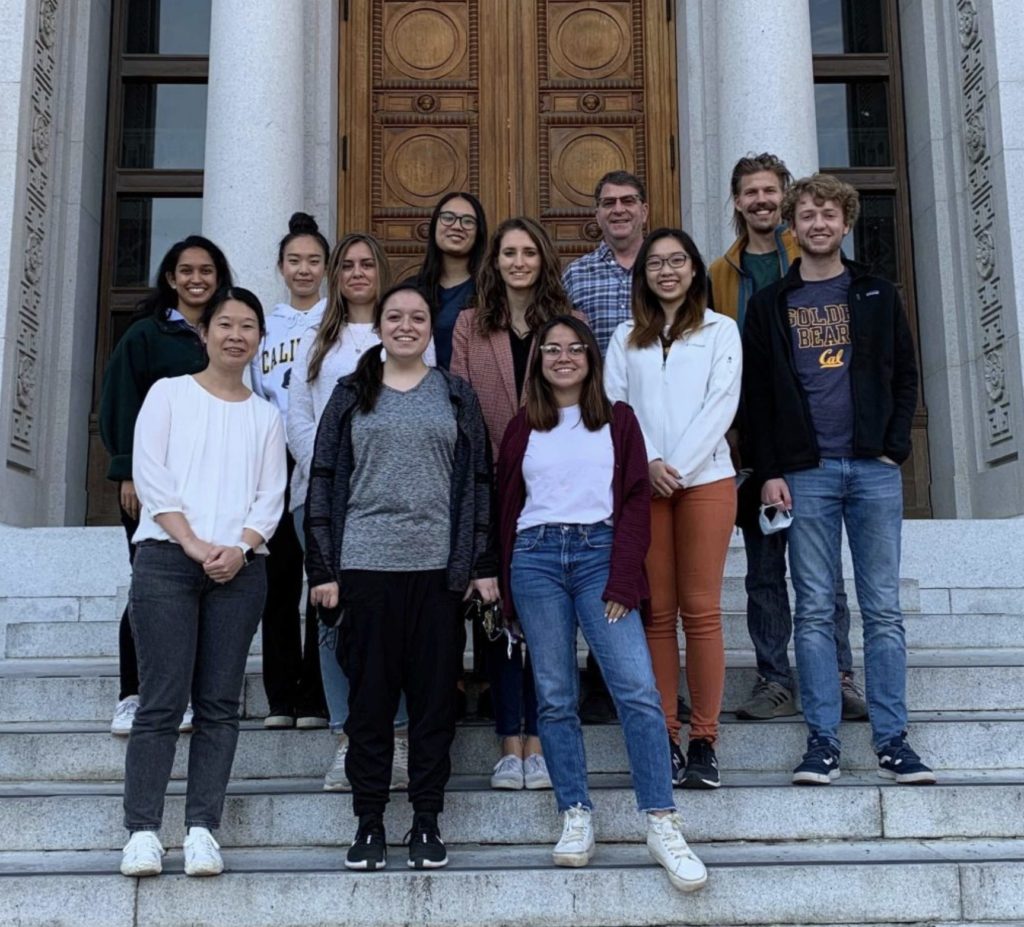Phillip Messersmith is a professor of bioengineering at UC Berkeley where he is the Class of 1941 Endowed Professor of Bioengineering and Materials Science and Engineering. His laboratory is interested in understanding structure-property relationships in biological materials and in using this information to design biologically inspired materials for use in healthcare.
QB3-Berkeley: What is the focus of your lab’s research?
Phillip Messersmith: There are two main areas. The first is bioinspired materials. In that area, we’re interested in understanding biological systems and in particular, organisms that use materials in unusual or creative ways to solve problems. We’re interested in studying those systems, learning about them from across length scales—from the molecular to the macroscopic. We then take that information and use it to inform the design of synthetic materials that hopefully capture some of the unique properties that are found in nature. A frequent inspiration for us are the adhesive proteins that mussels use to stick to wet surfaces. We develop mussel-inspired materials for wet adhesion—for example, pressure-sensitive adhesive tapes that work underwater—and also medical adhesives where inspiration from the mussel helps us solve medical problems in the areas of tissue repair and drug delivery.
The second area is a little more recent for us and that’s regenerative medicine, which uses biomaterials to enhance the regeneration of tissues. Specifically, we’re working on a therapeutic drug that can enhance regeneration of certain tissues. This work involves designing drug delivery systems that are polymers to deliver the therapeutic molecule. And the current work in the lab is focused on a number of areas related to this. One is periodontal tissue regeneration in advanced periodontal disease, which involves degradation of the underlying structures holding your teeth in the bone of the jaw. We’re developing polymer drug delivery systems to try and enhance regeneration of those tissues and in periodontal disease. We also have a government-funded project to regenerate digits. The DoD is interested in enhancing the ability of soldiers to regenerate tissues after incidents like blast injuries, so we’re trying to use our concepts in regenerative medicine to apply solutions to that problem. We also have early work focused on regeneration of tissues to treat other diseases, for example, inflammatory bowel disease and diabetes.

QB3: What’s the biggest challenge and greatest reward of running your lab?
PM: The biggest challenge is staying relevant. And, a part of that is reinventing yourself every few years, in terms of what you’re focused on in the lab. I found that the biggest challenge early in my career was the challenge of distinguishing myself from my former mentors and what they do. These days, reinventing myself occasionally by finding the next topic for your research is challenging.
For me, the greatest rewards are watching my former group members become successful in their chosen careers, and seeing other people recognize your research results and utilize those in their own research. It’s a huge thrill to see the results of our research being implemented by other labs.
QB3: What advice would you give to students who are interested in your field?
PM: Read the literature. I find that sometimes students don’t read the literature beyond what pops up in a Google search or on Google Scholar. At times, trainees also forget to read very far back in the literature, and I believe there’s a lot to be learned from what’s already been accomplished in your research field, sometimes many years ago. Part of the learning experience is understanding how your research fits in terms of what other people have studied and published, so that you can then identify where the opportunities lie. Trying to get my trainees to understand the historical importance of what’s come before they arrived in the lab and embrace that sense of curiosity is really important.
QB3: What do you like best about living in the Bay Area?
PM: It’s got to be the weather. I grew up and spent most of my adult life in Chicago and moved to California about eight years ago. I just love the climate here and the great many things you can do within a very short distance of the Bay Area. Additionally, I appreciate the progressive mindset of the Bay Area.
QB3: What do you enjoy most about working with trainees in your lab?
PM: I enjoy seeing them develop as researchers, scientists, and engineers. It’s exciting to watch an undergrad gain their footing in the lab environment, transition to writing papers, and then go onto graduate school or a flourishing career in industry. That’s the most rewarding part of being a mentor—seeing the trainees develop their skills and go off into the world to be successful, whether that’s in academics or in industry or government. That’s truly rewarding.